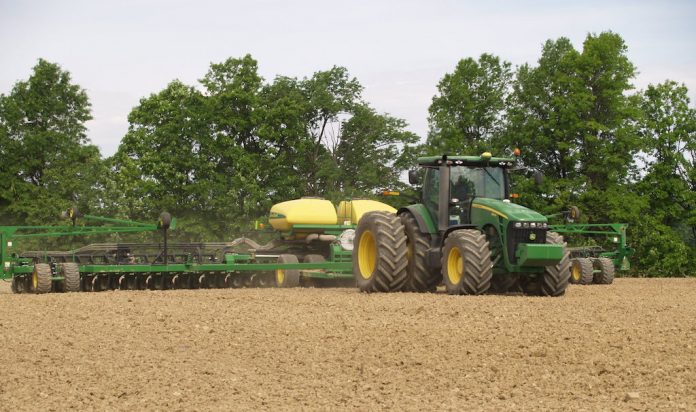The bigger the farms get, the more anxious the farmers are to get planting started. Only in the “I” states or southern states is much corn planted, but this is the time that farmers get really antsy to get wheels turning.
I remember in the dark ages (well actually in the 80s), getting started earlier and earlier, until the year I planted corn on my best farm on April 20.
I was really excited, but not for long. The last 10 days of April and the month of May were cool that year, and it was the last day of May before I saw sprouts that I didn’t have to dig up.
Early planting
Nowadays, farmers hope to be going strong by that time, and are even planting soybeans that early. I read an article today about a farm in Iowa that hoped to be done planting corn this week.
The idea was that the crop was getting in early, but today’s U.S. Department of Agriculture Planting Progress Report says that Iowa as a whole is only 18% planted as of April 20. That is way ahead of the average for this date of 7%, but would indicate that the article was written about the exception, not the rule.
The other “I” states are actually behind in planting. Illinois, which often gets the southern half of the state planted in April, is only at 7%, against a normal 11%. Indiana has 2% planted instead of the normal 5%. The nation as a whole has just 12% of the corn in the ground, against the average 10%. Ohio shows acres planted for the first week in this report, but it is only 2%, which is our average.
Consistent with the trend to early planting of soybeans, farmers in some states have planted more soybeans than corn. Illinois farmers have planted 10% of the crop, with the average for this date of just 7%. Indiana has planted 3% of the soybeans, right on the average. Ohio has nothing reported officially, but the normal is 2%, so we are a little behind the average.
We are a long way from knowing if this year the whole crop gets in late or just on time.
That is the second biggest factor in prices right now, after planted acres. And, if the weather keeps us out of the fields, we will not get all the expected corn planted.
We are starting the period of the year when farmers ignore marketing as they concentrate on planting. This year, that may be okay, because when we finish, we can go back to making marketing decisions, after spring weather could change our situation.
Markets
Last week, the grains did not make much progress, then they were significantly lower by the close on April 21. Early market letters actually expected better prices, but by the close, the July corn futures were off 3/4 of a cent, the July soybean futures were down 6 1/4 cents, and July wheat futures in Chicago were off a dime.
Reasons for the negative mood of traders were many and often in what we call the “outside” markets. There was heavy selling in the “equity” markets (think Wall Street). The mood there was following the current relationship of President Donald Trump and Federal Reserve Chairman Jerome Powell. Trump thinks Powell has been too slow to lower interest rates. Some say he would like to fire him, but he is supposed to be insulated from firing by law. The uncertainty this puts in the markets is a reason or excuse for lower prices in the stock markets.
The grain traders seemed to see little upside potential at this moment. The market at this point in the spring assumes perfect weather and a record crop. Two factors that favor higher grain prices are the lower dollar value, which helps us sell grain overseas, and the tight supply of corn. There is the feeling that we may not have as much corn as is being reported, based upon the strong demand at times, as expressed in basis.
The export news would have to be considered good, which is another reason why the drop April 21 is a little surprising. We shipped 1.56 MMT of corn, after a week in which we shipped very little. The four-week shipment of corn is 39% above the same period last year.
Probably none of the grain being loaded was going to China. Our tariff tiff with them has them not wanting our grain at the exact same time when they can get all they want out of South America.
We did ship 554,803 MMT of soybeans. The biggest buyer was Mexico.
The funds have changed some positions for what could be the better. Could be because the funds are fickle and can turn on a penny, not just a dime.
They reversed their soybean position, going from being short over 27,000 contract of futures and options to being long over 433,000 contracts. They increased their long corn position almost 14,000 contracts.











